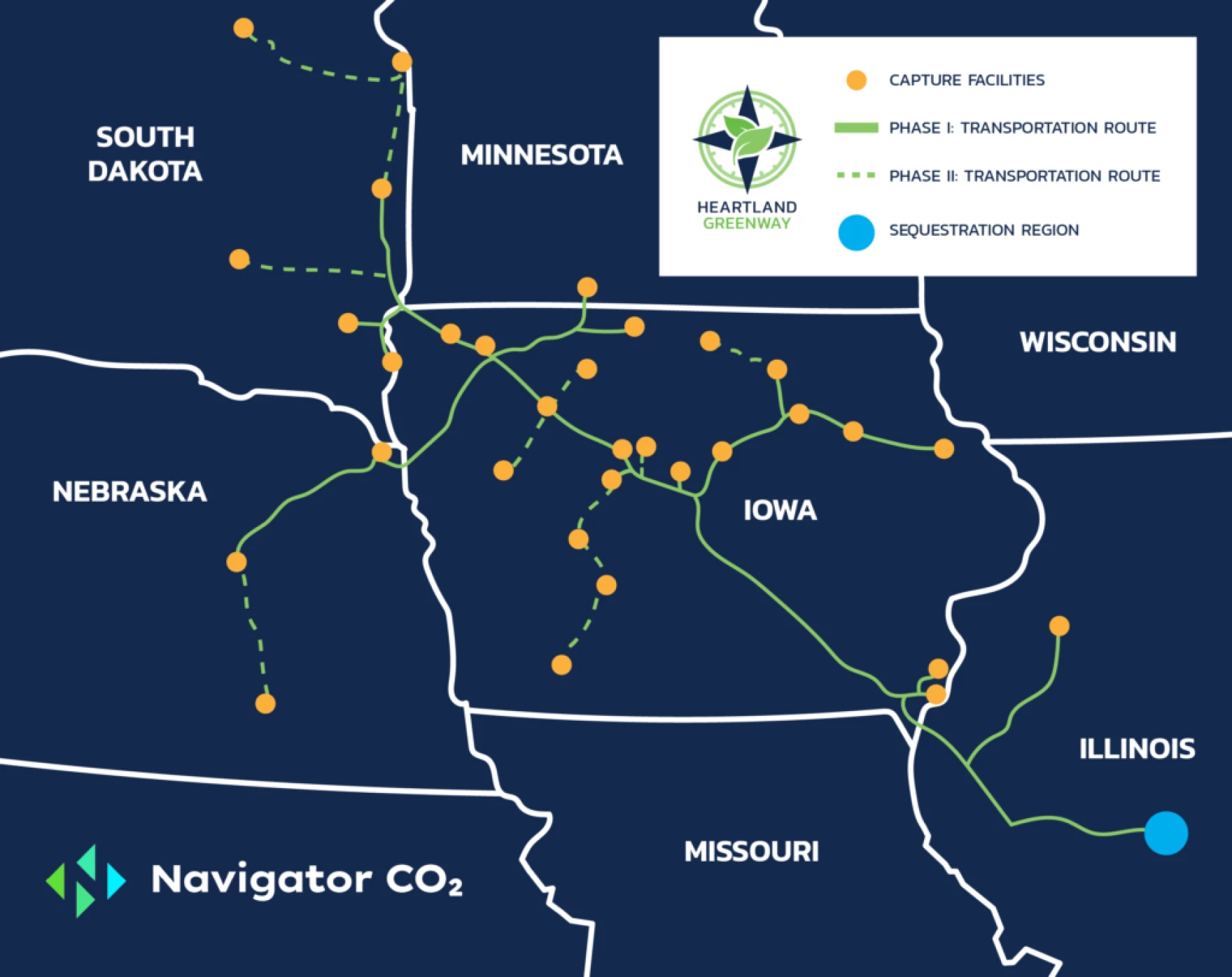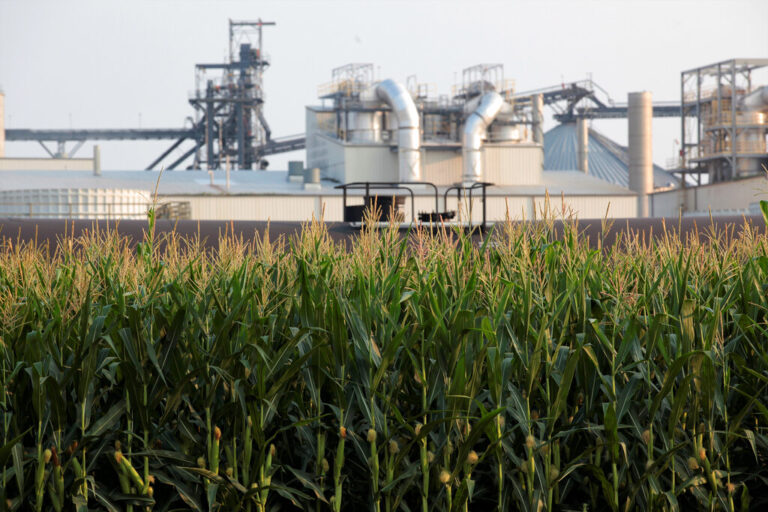
A CO2 pipeline project that would stretch 1,300 miles has raised agriculture and environmental concerns across Illinois.
McDonough County farmer Steve Hess is familiar with pipelines. Hess has one carrying natural gas on his property and says he believes it has been positive for the community.
Hess said, “We’ve talked about it (the natural gas pipeline) and my family is still glad that they did that pipeline project, because it helped the city and it was something that helped out the community. We have hooked two houses up to it and we actually dry our corn with it today. So, we feel like that was a public utility and that was a project that we needed.”
Hess has a different view of the effort to transport CO2 from five states. Hess believes the CO2 pipeline would not be beneficial to communities like the natural gas pipeline on his property. In Illinois the project would run through 13 counties in western and central Illinois using underground storage, or sequestration, at a site near Taylorville in Christian County.
Elizabeth Burns Thompson the Vice President of Government and Public Affairs with Navigator CO2, the company behind the pipeline project known as Heartland Greenway, says there are many economic benefits to the project.
Burns-Thompson said, “The Heartland Greenway will create up to 9,000 local union jobs to construct the project, including locally in Christian County. These workers will pump money back into the local economy when they dine at local restaurants, patronize local stores, and pay for lodging….”
While keeping CO2 out of the atmosphere is considered to be a way to slow climate change, there are concerns about whether the pipeline would actually add carbon to the atmosphere. Hess has raised questions about the project, and he’s not alone.
Karen Brockelsby, a Taylorville farmer, questions the lease program being offered for use of private property. The company wants a 30 year lease with landowners. Brockelsby mentioned concerns about whether that lease will cover any environmental damage.
“If there are problems, who owns the problem? And who has to pay for the problem?” Brockelsby asked. “There are (also) concerns about whether or not insurance companies would cover any kind of damages that would result from CO2 rising back to the surface and damaging something.”
Burns-Thompson said they (Navigator CO2) maintains full liability with the 30 year lease program.
“Navigator maintains the full liability for the safe operation of the project, which includes both the transportation pipeline as well as the sequestration site. This liability is reflected in the contracts we are signing with landowners where we have included a full indemnification clause, ensuring that we are the party carrying the liability,” Burns-Thompson said.
Farmers like Brockelsby and Hess worry that the land will be impacted beyond repair for future generations. Hess has concerns about deep compaction of farmland because of the pipeline.
Hess said, “The deep compaction…you can’t take it out with tillage, you can’t take it out with freezing and thawing it’s something that’s there forever. There is no way to remove it. So, I am really concerned about farmland impact.”
Hess also said that he has noticed this same deep compaction on his farmland from the natural gas pipeline that was installed in 1966.
CO2 pipelines are listed as a public benefit under the law. However, the scientific community is split on whether a pipeline will actually accomplish a goal of reducing carbon emissions.
Ann Baskerville an organizer with the Illinois chapter of the environmental organization the Sierra Club and a member of the coalition to stop CO2 pipelines does not believe the pipeline will help the environment.
“This proposed pipeline is a false solution to the climate crisis we’re facing today, and puts unnecessary pressure on local landowners and farmers to turn over their land and livelihood to a fossil fuel company. CO2 pipelines extend the life of fossil fuels and undermine the significant climate progress Illinois has made. Illinois should focus on the acceleration of real climate solutions like the implementation of natural climate solutions and renewable energy projects,” Baskerville said.
In 2020, a pipeline leak in Satartia, Mississippi led to a green cloud of fog and a rotten egg smell causing dozens of people to become nauseous and dazed. There is a difference between a CO2 pipeline and a natural gas or oil pipeline. Francesca Butler, a member of the Environmental Justice Task Force of the Faith Coalition for the Common Good, says the difference is in the pressure.
Butler said, “So, the difference between an oil and gas pipeline and something like a CO2 pipeline is that the gas and the oil pipelines aren’t pressurized to the same degree as a CO2 pipeline is. So, it’s not CO2 gas that is being pumped through the pipeline. It would be a highly pressurized, liquified CO2.”
The Heartland Greenway website claims the pipeline will allow for capture and storage of 15 million metric tons of CO2 each year. The site also says that the company builds and operates projects to meet or exceed safety standards.
The pipeline still needs regulatory approval in various states, including Illinois. The Illinois Farm Bureau has filed a petition to intervene to make sure that any concerns can be addressed, but the IFB has yet to take an official position on the pipeline.
The Illinois Commerce Commission began hearings about the pipeline in September. A schedule of the hearing dates with the Illinois Commerce Commission can be found here. A deadline on the decision of the pipeline is scheduled for summer.

